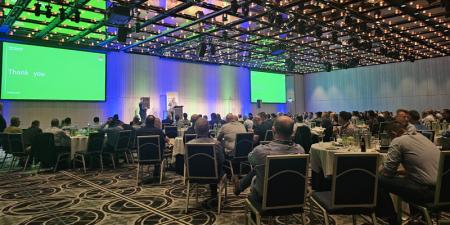NSW mines are being asked to remain diligent and prepare for the typical storm season that runs between October and March each year in NSW.
Storms can impact mining operations, demonstrating the need for mine operators to conduct seasonal risk assessments to consider the type and likelihood of events that may affect their operation.
Storms can damage businesses through flooding, high winds, and flying debris. Lightning strikes have also been known to cause tyre explosions.
Being storm ready includes having established procedures and escalation processes, for example a trigger action response plan (TARP), to ensure workers remain safe during a storm event. This includes having safe re-entry protocols in place.
Risks
Storms and wet weather events can present a wide range of risks that need to be considered by a person conducting a business or undertaking (PCBU). In summer, these events are typically dominated by elements of:
- strong winds
- storms or protracted heavy rainfall
- lightning.
Storms can lead to other emergencies such as bushfires or flooding and may present other issues at a workplace such as protracted loss of power or access issues. Some key risks to consider are:
- loss of access
- loss of power
- loss of communication systems
- instability of highwalls, road, ramps, stockpiles and emplacement areas
- portable infrastructure and buildings being blown over or moved
- fire related damage or injuries
- lightning strike damage and related fires
- wind dislodging items causing damage or injuries
- submersion of fixed and mobile plant
- hazardous chemical reactions due to heat or water exposure
- smoke entering underground ventilation systems
- loss of control caused by slippery conditions
- working in or around water and mud
- recovery operations needed to re-establish power, communications and access.
Seasonal risk assessment
Before each storm season commences, mine operators should develop or review their seasonal risk assessment based on the specific hazards that might be present on site. The Resources Regulator recommends doing the following:
- visually inspect the mine, including drainage structures and dams
- survey pick-ups to ascertain where drainage issues may exist
- using weather modelling and information from appropriate sources
- inspect buildings, workshops and shipping containers
- use appropriate reports (e.g. water level reports, structural integrity, geotechnical hazards)
- use appropriate and relevant technical input.
Recommendations
Mine operators should have the following safety systems in place:
- A process for identifying and warning impacted workers and or sites who could be affected by severe storm events, including an escalation system such as a TARP.
- A system for evacuating workers to a safe place or off-site.
- Timely actions to bring risk into acceptable limits.


